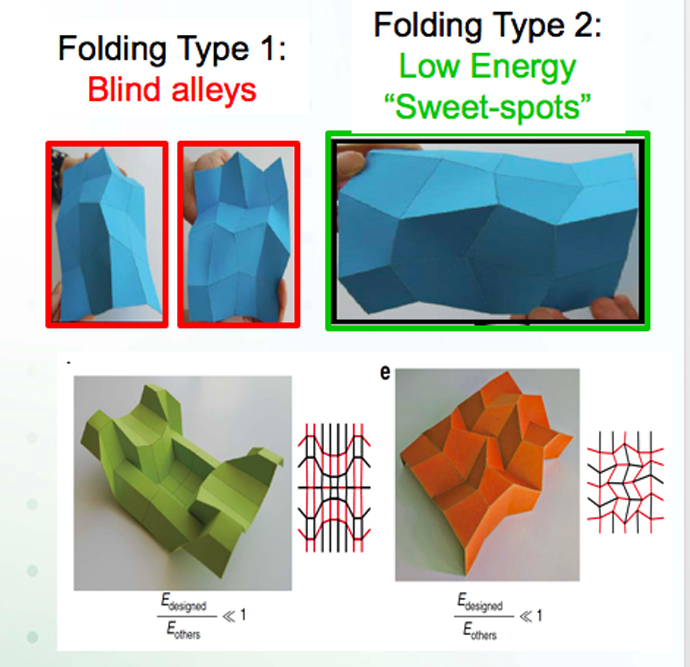From the ancient art of origami to modern meta-materials research, a central goal has been to develop the ability to convert a flat, stiff sheet into its final three-dimensional shape with just one single folding motion. Except for a few known cases, general design rules for the required patterns of creases have been elusive.
Major progress towards this goal has now been achieved at the Chicago MRSEC by a team that included Arvind Murugan and Tom Witten together with joint postdoc Matthew Pinson and Puerto Rican REU student Alexandra Carruthers Ferrero. The team uncovered new statistical results in origami, developed a novel classification of folding types, and identified pathways for achieving patterns whose energies are sufficiently low that they can be used to create self-folding structures.
This work opens up a wealth of new self-folding designs that are programmable.

